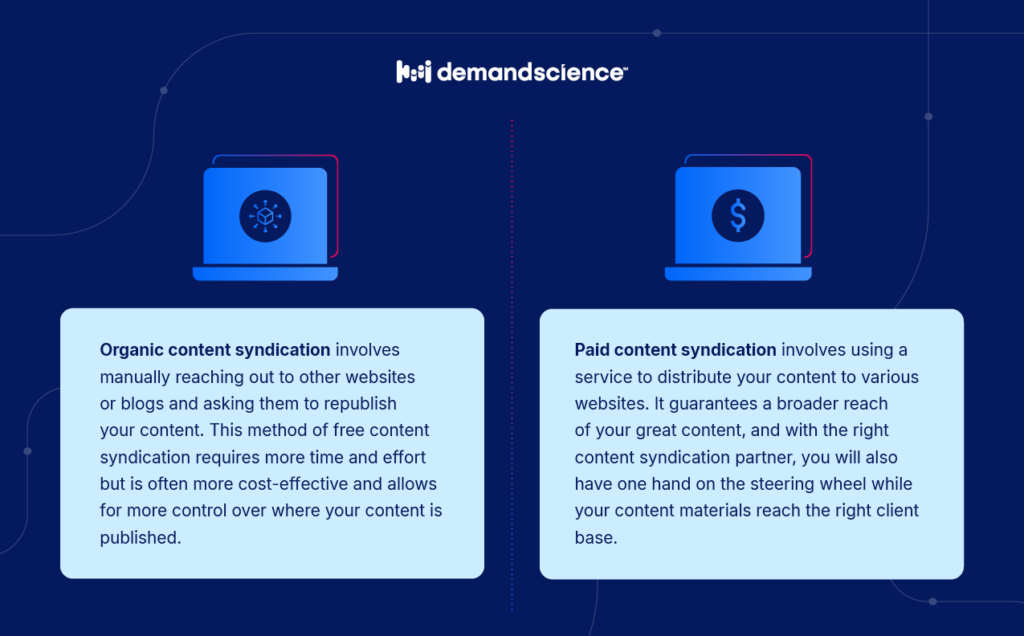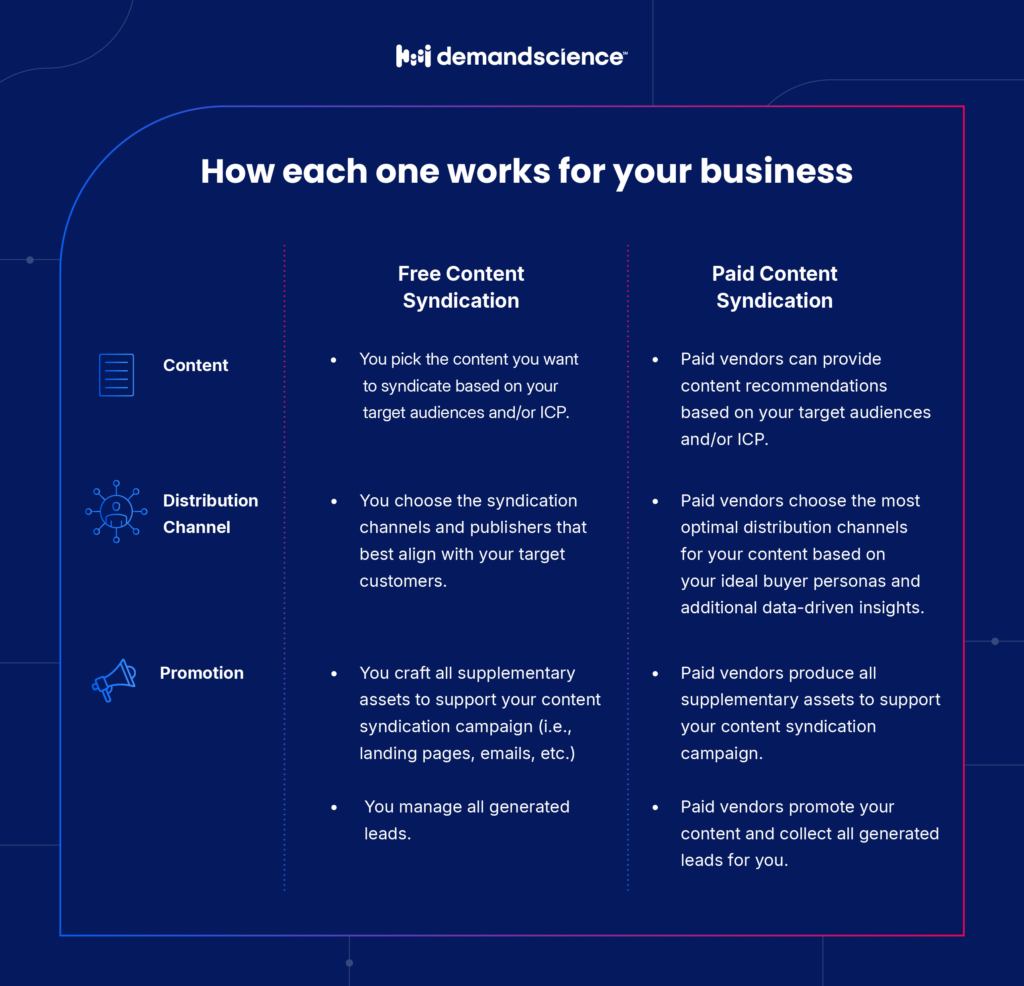Ultimate Guide to Content Syndication
Content syndication is one of the easiest, most effective marketing tactics you can use to expand audience reach, increase brand awareness among target audiences, boost organic website traffic, generate quality, purchase-intent leads, and enhance SEO performance, all in one fell swoop. Not only that, but a successful content syndication campaign also helps you build credibility with buyers and content publishers alike, positioning you and your company as reliable industry experts. Considering all those benefits, it would be silly not to make content syndication an integral part of your lead generation strategy.
But what exactly is content syndication? And how does it work? You’ll find all those answers and then some, right here in our ultimate guide to content syndication.
What is content syndication?
Content syndication is when you republish your already-existing content, be it a blog post, a case study, or even a video, to one or more different websites. And the benefit is two-fold: first, these websites provide readers with fresh content brimming with useful information. And second, you’re able to extend the life of your top-performing content by sharing it outward to larger audiences, which gives you and your brand a huge boost in visibility.

As for the “how to” question, there are two ways to execute content syndication. You can take the free DIY approach or work with a paid content syndication vendor. No matter which way you choose, you still have every opportunity to experience the full benefits of content syndication. But the paid strategy does offer a more strategic, data-driven approach that can streamline your efforts and drive more positive results, fast. That’s because paid vendors leverage countless insights from first, second, and third-party data to narrow in on the most relevant publications for your target audiences. Even better—paid vendors will determine an appropriate cost for their efforts based on your available budget.

We’ll get more into the specifics of free versus paid content syndication later in this guide, but this foundational explanation is a great place to start before diving into the details.
Get your own copy of the guide.
Content Syndication Fundamentals
Learn how content syndication fits into your wider marketing strategy and the basics of getting started.
Benefits of Content Syndication
Explore the benefits of syndicating your content, including reputation, traffic, and lead generation.
Building Your Content Syndication Strategy
Examine common approaches to content syndication with details on both free and paid strategies.
How to Implement Content Syndication
Get started on your strategy today with implementation tips to help you meet your specific goals.
Measuring Content Syndication Performance
Find out the most important metrics to track the performance of your syndication campaign.